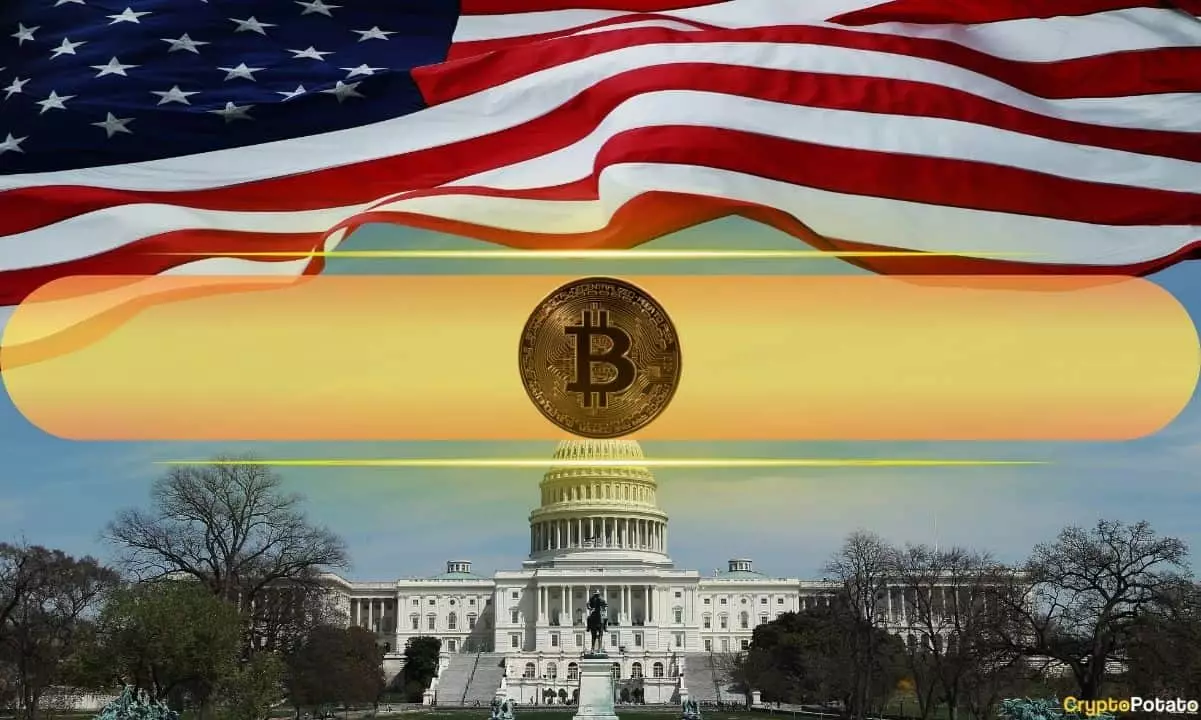The world of cryptocurrency is not just a passing fad; it’s emerging as a critical player in our global financial system. Under the Trump administration, the idea of establishing a U.S. Bitcoin Reserve is not merely ambitious—it’s a game-changing proposition that could redefine America’s financial landscape. Bo Hines, Executive Director of the President’s Council of Advisers on Digital Assets, has taken a keen interest in innovating how the U.S. interacts with digital currencies. His recent discussions on potential funding sources for a Bitcoin Reserve highlight a transformative pivot in our approach to finance.
Introducing alternative revenue streams, such as tariffs and the revaluation of gold reserves, is no naive fantasy; it reflects a practical acknowledgment that traditional funding mechanisms may be insufficient for the digital age. Moving forward, it’s crucial for policymakers to recognize that creativity, rather than strict adherence to outdated strategies, can yield significant benefits. In an era where financial technology is rapidly evolving, the proposal to fund a Bitcoin Reserve with seized criminal assets is particularly noteworthy. It not only circumvents the need for taxpayer funding but also serves as a powerful reminder of the judiciary’s role in the marketplace.
Revolutionizing Gold Reserves
Hines has indicated that one of the most revolutionary elements of this plan might involve the revaluation of the U.S. Treasury’s gold certificates. Currently pegged at a historic rate far below the present market value, these certificates can theoretically be revalued to capture a surplus that could then be redirected towards acquiring Bitcoin. This shift in strategy isn’t just about digital growth; it represents a recalibration of fiscal policy, recognizing that gold, while historically significant, must adapt to the realities of modern finance.
Consider this: if the U.S. Treasury were to adjust the price of its gold reserves from $43 to $3,200 an ounce, the resulting paper surplus could create an impressive influx of funds for Bitcoin purchases without jeopardizing physical gold assets. This is not just clever finance; it’s a bold reimagining of asset management in today’s digital economy. While some may view this as reckless financial maneuvering, it’s hard not to see the potential for substantial gains that could come from embracing innovation.
Interagency Coordination for Success
An important aspect of Hines’ vision is the collaborative effort across federal agencies, including the Department of Commerce and the Treasury. Such interagency cooperation is crucial for the successful implementation of any financial innovation. The bureaucratic nature of government can be cumbersome, but a dedicated working group could facilitate the nimbleness necessary for this financial revolution.
Another layer to this initiative is embodied in the proposed Bitcoin Act of 2025, championed by Senator Cynthia Lummis. This legislation aims to anchor the U.S. policy landscape in favor of digital assets. Such proposals should not merely be viewed as partisan endeavors but as crucial steps towards modernizing our economy. The concerted effort to legislate around crypto issues like tokenization and stablecoin development indicates a serious commitment to integrating digital assets into the economic framework.
The Vision of a “Crypto Capital”
In a passionate bid to position America as the “crypto capital of the world,” the White House is actively drafting a national digital asset framework aimed at improving transparency and functionality within the sector. The traditional banking system has faced criticism for its inefficiencies, hidden fees, and opacity. In contrast, the promise of blockchain technology and digital assets presents a compelling vision for the future, fueling financial inclusivity and fostering direct control over personal finances.
However, while this vision is compelling, it raises several questions. Will the ongoing regulatory landscape keep pace with innovations in this space? Can the government balance innovation with necessary consumer protections effectively? Most importantly, will Congress support these forward-thinking initiatives, or will they be stymied by bureaucratic inertia? The outcomes of these questions will dictate if this vision for the U.S. Bitcoin Reserve is merely aspirational or becomes a cornerstone of our national economic strategy.
In light of these developments, it’s essential to critically assess the motivations and aspirations of this initiative. As we move forward, embracing such bold financial maneuvers could lead to a revitalized economy that aligns with the fast-paced, tech-driven environment in which we now operate. Burning with potential, the U.S. Bitcoin Reserve can no longer afford to be a whisper in the halls of Congress; it demands to be the clarion call for a new financial era.
















Leave a Reply